Maya Government › The Early Christianization of Armenia » Origins and History
Articles and Definitions › Contents
- Maya Government › Ancient History
- The Early Christianization of Armenia › Antique Origins
Ancient civilizations › Historical places, and their characters
Maya Government › Ancient History
Definition and Origins
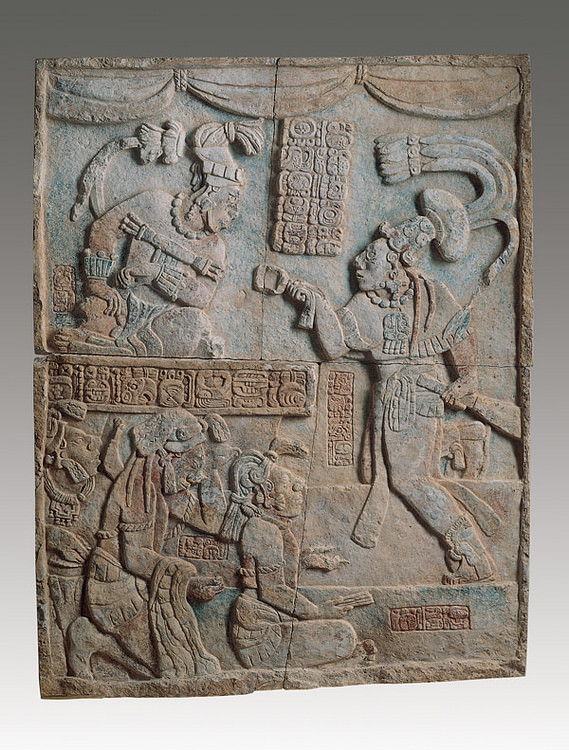
Ancient Maya government was formed on the basis that rulers were thought to have been god-like, which to some might suggest one unified state. However, the consensus amongst anthropologists supports that each major Maya city remained its own independent and sovereign entity with its own unique struggles for political power. The Maya belief in god-like rulers also made it important to keep the line of power in the family, which would occasionally include a woman ruler.
The various Maya city-states are found in what is today Mexico, Guatemala, El Salvador and Honduras. The civilizationextended from circa 1500 BCE to approximately 1500 CE. These years are typically divided into three periods; the Pre-classic, the Classic, and Post-classic. The Pre-classic ranges from approximately 1500 BCE to 250 CE, the Classic from 250 CE to 900 CE, and the Post-classic ranges from 900 CE to 1530 CE.
THE RULERS OF THE VARIOUS MAYA CITY-STATES WERE THOUGHT TO BE A KIND OF HUMAN-GOD HYBRID.
The periods are usually distinguished by a few characteristics. The Classic period can be recognized by the abundance of Maya polities and the thriving trade between the Maya polities and other non-Maya polities. In contrast to the elites from previous periods, elites from the Classic period are believed to have been literate and knowledgeable. The Pre-classic period is notable for fewer large polities. The fundamentals of the later Classic period's trade were also being developed at this time.The Post-classic period is marked by the decline of many of the large and once-powerful city-states. Many of these city-states were abandoned and had a severe drop in their populations.
POLITICS OF THE MAYA
Maya politics did not begin with kings in the early Pre-classic period. Much of the political systems in the Maya polities began in the late Pre-classic period around 300 BCE. The rulers of the various Maya city-states were thought to be a kind of human-god hybrid. Men weren't the only people who were allowed to rule. On occasion, women would rule when the king wasn't yet of age, when a king was away at war, or if a king was unavailable for some other reason. According to Martin, rulers could assert their status as king or lord on Ajaw or Ahau (lord) day. Kings would have an effigy of themselves carved on the Sacred Round. The Sacred Round was a 260 day calendar which consisted of 13 20-day months. Each day of the month was represented by a specific god; Ahau day was specifically for kingly rituals. Once a king had achieved the honor of being on the Sacred Round, the depiction became an actual personification of the king and time. Throughout the Maya era, the Maya remained in separate polities and did not unite as one empire. The same can be said for the celebrated Classic Maya period.
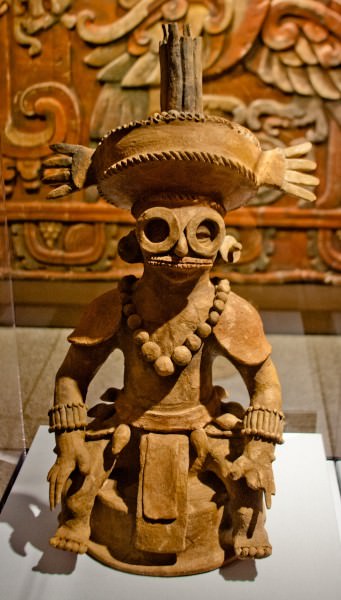
K'inich Yax K'uk Mo
The Classic period is considered by Cioffi-Revilla and Landman to have had about 72 major political units. These polities did not all exist simultaneously. The researchers posit that about 50 polities existed together at one point. The 72-polity figure doesn't include the smaller, less politically stratified units, however. Because these polities would trade with each other as well as non-Maya polities and were independent from each other, the Maya civilization is seen as an internationally trading civilization.
The increased trade of the Classic states contributed to the politics of the Maya. Researchers have understood that the Maya underwent two cycles of politics. The cycles involved an initial period of rise and fall, then a so-called “rebound” time which was shorter than the first period, but still followed the normal patterns of the cycle and went on until the late Post-Classic Maya period. The first cycle involved a longer period of time for economic, political, and population development. Cioffi-Revilla and Landman state that while the number of polities did fall at the end of the first cycle of collapse around 900 CE, the politics did not completely vanish.
MAYA ECONOMY
The economics of most Maya polities are intertwined with the social framework of the Maya. The most widely accepted system of social framework for the Maya is the classic three-tiered system. The system consists of elites, a “middle class,” and a “lower class.” The elites were typically situated near the temples in the city center and their homes were built of stone. The “middle class,” was further from the city centers, with homes made of wattle and daub. Wattle and daub are essentially the new world equivalent of thatch-roofed homes. The “lower class,” were typically even further from the city centers and had wattle and daub homes as well. However, this take on the social structure of the Maya may be shifting.
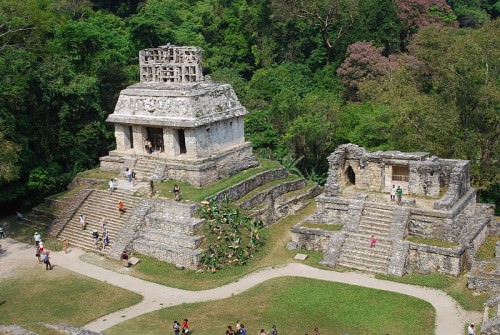
Temple of the Sun, Palenque
Robert Hamblin, a professor at Southeast Missouri University and Brian L. Pitcher, sociologist and chancellor at Washington State University, have found evidence for a wide variety of elite uniforms which suggests that there may have been specialization among the economics of the elite. Because the middle class was the main goods producer, it is implied that the elites and middle class worked closely together in regards to the production of specialized goods. The combination of the different elite uniforms supports the theory that the elites and middle classes worked together. While it may not be the case that elites are actually the producers of goods, they could have been foremen-types for certain industries.
KOSAKOWSKY'S STUDY ON THE CLASSIC MAYA CITY OF MOTUL DE SAN JOSÉ DEMONSTRATES THE SHIFTING TENDENCIES OF REIGN AMONGST THE ELITE.
While there is much study about the larger Maya cities, more recent studies in moderately sized Maya cities is important for establishing what life may have been like throughout the Maya realm. The following cities were the focuses of three different studies which help to illustrate the overarching themes of Maya government.
Kosakowsky's study on the Classic Maya city of Motul de San José demonstrates the shifting tendencies of reign amongst the elite. These changes in the actual geographical boundaries of reign for the elites could also indicate that at some point, there could have been independent cities. In other words, there was no ruling system in some of the ancient Maya cities. The theory is supported by the varying Ik-style pottery. Ik-style poverty is mainly a Motul product that shows designs pertaining to gods, current rulers, feasts, scenes of warriors, and bloodletting scenes. Research also unveils another take on Maya social and economic structure. Instead of the traditional three-tiered system, Kosakowsky argues for a more complex stratification of the Maya economy. The elites of Motul de San José had access to a variety of valuable horticultural items. Elites were not the only segment of the population that had access to high-value materials. Kosakowsky's studies have found that lower classes had access to goods such as white-tailed deer.
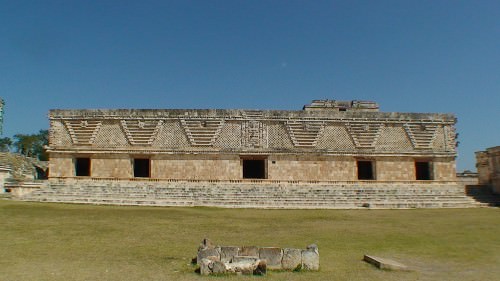
Nunnery Quadrangle, Uxmal
In a study at Copán, there was more evidence to support the diversity between the social classes. Many of the skeletal remains of children across the classes exhibited similar nutritionary and disease stresses. In contrast, the adult elites were more full-bodied, had less signs of arthritis, and were taller than adults from different classes.
In the third case, Cobos examines life in Xunantunich and its surrounding lands. This late Pre-classic/Early-Classic city shows evidence of political experimentation. He argues that this experimentation occurred over a short period of time, but with drastic shifts in policies. Xunantunich showed evidence of “lower class,” people living in the outskirts of the city. However, in contrast to the original notions of class separation, there was also evidence of elites living in the hinterlands of Xunantunich. It is believed that the elites living in the hinterlands were also in charge of the production of goods. The trade of the hinterlands was mainly that of stone tools, and silex, a type of whimsically crafted flint. As for the reigning or royal families, Xunantunich shows that they kept palaces and other large living areas away from the hinterlands and Xunantunich.
CLASSIC MAYA RULERS
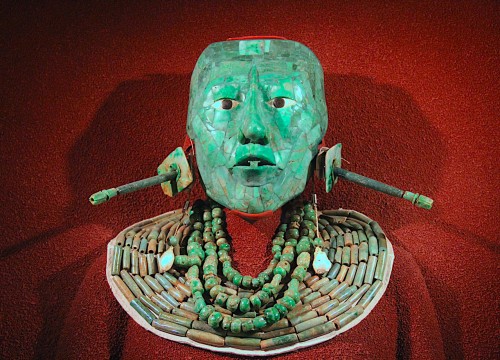
Jade Death Mask of Kinich Janaab Pacal
As mentioned above, women were occasionally rulers of Classic Maya cities. Women rulers were a more prominent phenomena in Palenque. There are at least two notable female rulers of Palenque which include Lady Yohl Ik'nal and Lady Sak K'uk. One recent discovery of an acclaimed “warrior queen" in Waká has brought about a question about female Maya rulers: did Maya queens participate in battles?
Lady K'abal of Waká was given the moniker of kaloomte, or “supreme warlord,” by her city. This suggests that she may have taken part in battles. However, some experts believe that she did not participate as a warrior. This is due to the fact that there is no glyph or artistic depiction to support Lady K'abal's or any other queen's participation in battle, yet. Of course, kings were often required to participate in battles.
K'uk' Bahlam I, the founder of the city of Palenque, was born in 397 CE. Bahlam I acceded the throne in 431 CE and only ruled for four years after that. Palenque's rulers may have been established by the early influence of Teotihucán. However, the scant evidence of early Classic rulers may explain the gap of information between the early Classic and late Classic rulers.
In Copán, K'inich Yax K'uk Mo was ruler and founder in 426 CE. The founder of Classic Tikal was Yax Ehb Xook. While it has been suggested that Maya rulers were legitimized based on family ties, there are several deviations from this in Tikal. One such deviation is that of the dynasty of Jaguar Claw. The shared culture of the Maya can be puzzling when the Maya were never politically unified. However, the Maya are considered one culture primarily because of the shared beliefs, practices of advanced astronomy, and architectural and art styles. Ultimately, it seems that the lack of political unification is what led to their ultimate demise, among many factors.
DISINTEGRATION DURING THE CLASSIC PERIOD
The Classic period is characterized by its seemingly exponential growth whose cause is attributed to a rise in trade and communication. What is clear is the rise in warfare amongst the different Maya polities. There is not much consensus about the cause of the Maya collapse, but there are several theories. Some argue that the collapse was due to a natural disaster of catastrophic proportions, extensive warfare between the polities, famine, civil unrest, and even environmental change.

Maya Warrior
The most popular belief pertaining to the fall of the Maya civilization is that it was the increase in inter-polity warfare that caused the disintegration. The rise in warfare is attributed to the increased trade of the Classic period. With the higher rates of interaction between the polities, scholars believe that tensions between polities because of their political differences caused episodes of inter-polity warfare.
ANTHROPOLOGISTS SUGGEST THAT THE FALLS OF THE VARYING POLITIES HAPPENED SLOWLY OVER THE COURSE OF ABOUT SIX CENTURIES.
Anthropologists suggest that the falls of the varying polities happened slowly over the course of about six centuries. Cioffi-Revilla and Landman also hint that “most of the polities that survived the preclassic,” began early during the pre-classic period and survived into the post-classic period. These longer lasting polities would last about 2,000 years and ultimately collapse during the Post-classic period. Neither author argues that warfare was the sole cause of the Maya collapse. It is possible that there could have been several factors that simultaneously affected the dissolution of the Maya.
One theory gaining popularity is that the Maya fell because of a lack of political unity. One study noticed that Maya states toppled much more quickly than they took to form. Throughout the entire Maya era the states lasted an average of 675 years, with a standard deviation of 65 years. However, Pre-classic states lasted an average of 1154 years, with a standard deviation of 96 years. Classic states averaged 348 years, with a standard deviation of only 24 years.
Pre-Classic states were fewer in number compared to those of the Classic period. As mentioned before, there were at least 50 Maya states in existence at one point during the Classic period. This is almost contradictory for Pre-Classic states. Similarly, the size of Pre-Classic polities is a stark contrast to that of Classic polities. Classic polities had populations of up to or more than 50,000 people while Pre-Classic polities had anywhere from 5,000 to 10,000 people.
Some argue that the lack of political unity amongst Classic states was the likely cause for the disintegration of the Maya. While there was a lack of political unity during the Pre-Classic period, there was not the same amount of competition as in the Classic period. Pre-Classic states did not need political integration to survive. Classic states needed a political harmony in order to combat the growing competition and populations of the many powerful states. Pre-Classic states were all more or less equal, while there were frequent power struggles amongst the Classic states. There is a growing consensus, however, that the collapse of the Maya was due to various agricultural, political and ecological factors acting together.
The Early Christianization of Armenia › Antique Origins
Ancient Civilizations
The Christianization of Armenia began with the work of Syrian apostles from the 1st century CE and was boosted in the early 4th century CE by such figures as Saint Gregory the Illuminator, who converted the Armenian king and spread the gospel message. A more complex process than legendary accounts portray, Armenia's adoption of Christianity was, nevertheless, a momentous chapter in the country's history, as the historian RG Hovannisian here explains:
The conversion of Armenia to Christianity was probably the most crucial step in its history. It turned Armenia sharply away from its Iranian past and stamped it for centuries with an intrinsic character as clear to the native population as to those outside its borders, who identified Armenia almost at once as the first state to adopt Christianity. (81)

Detail of a Cross from Surb Karapet Church
THE LEGEND: SAINT GREGORY THE ILLUMINATOR
The credit for establishing Christianity as the official religion of ancient Armenia is traditionally given to Saint Gregory the Illuminator or Enlightener (previously known as Grigor Lusavorich, c. 239 - c. 330 CE). Gregory is credited with converting king Tiridates the Great (rc 298 to c. 330 CE) to the new religion, formally establishing the Armenian Church, and spreading Christianity throughout his country. For these achievements, Saint Gregory has become the patron saint of Armenia.
Gregory was born in Cappadocia and raised as a Christian, attending there a Greek Christian school. On returning to Armenia, Gregory gained a position as a palace functionary at the court of the Armenian king at Vagharshapat. There he made a stance against the pagan religion of the period and refused to participate in its rites. The reigning monarch was Tiridates the Great, and he had the troublesome Gregory imprisoned, tortured, and thrown into the terrible Khor Virap prison at Artashat.Known as the “pit of oblivion”, nobody ever returned from Khor Virap.
TO GET THE BALL ROLLING, TIRIDATES GAVE SAINT GREGORY UP TO 15 PROVINCES WORTH OF TERRITORY TO ESTABLISH THE ARMENIAN CHURCH.
After a 13-year ordeal down in the pit, Gregory was given a miraculous lifeline by, of all people, Tiridates' sister Khosrovidukht.She had had a vision that Gregory was the only person who could save the king from his terrible illness (lycanthropy).Accordingly, Gregory was freed from Khor Virap, and naturally, besides trying to cure the king, he made his best efforts to convert him to Christianity. Tradition (and the Armenian Apostolic Church) records that Tiridates was indeed cured and converted to his new faith in 301 CE by Saint Gregory.
Gregory was then made the first bishop ( katholikos ) in Armenia's history c. 314 CE, and he set about formally establishing the Christian Church. To get the ball rolling, Tiridates gave Saint Gregory up to 15 provinces worth of territory to establish the Armenian Church. The old pagan temples were torn down, and the whole nation was obliged to embrace the new faith.Churches and monasteries sprang up everywhere, and the Armenian aristocracy quickly followed the royal family's example with many noble families converting to Christianity.

Saint Gregory the Illuminator
Saint Gregory, then, had state backing to spread the Gospel message, and it was a work continued by his descendants who inherited the role of first bishop of Armenia. Gregory used two powerful tools to spread the word: education and military power.Schools were established in which children of the existing pagan priestly class were prepared for the Christian priesthood.Meanwhile, military units were dispatched to destroy pagan temple sites and confiscate their vast riches, which were then used to fund Christian building projects. Naturally, many temple sites, along with several rich and semi-independent feudal principalities, resisted the new policy and these were put to the sword. Pagan traditions were never fully eradicated but they certainly became weakened by the removal of the temples and their economic resources. Still, many anti-Christian and pro-Persian aristocratic families persisted in resisting at least into the next century. Gregory, meanwhile, oversaw mass baptisms in the Euphrates River; bishops were then appointed from the noble clans ( nakharars ) and lower priests from the class of knights ( azats ) to guide the ever-growing flock of faithful.
THE HISTORY: A GRADUAL ADOPTION
That is the legend of how Armenia became a Christian state. Modern historians, though, prefer a more organic process of acceptance and conversion occurring in different places at different times. They also prefer the more secure date of around 314 CE of Armenian's official adoption of Christianity. This followed the Roman emperor Constantine I ’s Edict of Milan in 313 CE which legalised Christianity in the Roman Empire of which Armenia was a province. It seems probable that Christianity actually entered Armenia by two separate but more or less contemporary routes, thus explaining the conflicting accounts in ancient historical records.
Saint Gregory represented the transmission via Greek culture in the capital while in the provinces a greater influence came from Syria, especially via the Armenian communities in the cities of Mtsbin and Edessa in Mesopotamia. Edessa, in particular, following the work of the two apostles Thaddeus and Bartholomew, was a major centre of the faith. With a large Armenian population and the religion having there been established for over two centuries, it is probable that returning emigrants brought Christianity back with them. Indeed, both of the aforementioned apostles travelled to Armenia, as did many Assyrian priests such as Bardatsan (Bardaisan) of Edessa, and there set up schools which taught and preached the new faith.Another route into Armenia of Christian ideas was via the border regions of Bitlis (Baghesh) and Mush (Taron) to the west of Lake Van. Thus, the spread of the religion was much slower and more haphazard than in the traditional account.

Tiridates the Great
Historians also suggest that Tiridates the Great may well have adopted Christianity for more practical reasons than a change of faith based on his miraculous recovery of health. The end of the ancient pagan religion was a fine excuse to confiscate the old temple treasuries which were jealously guarded by a hereditary class of priests. The religion was also a useful point of distinction between Armenia and Sasanid Persia, who had been trying to spread Zoroastrianism in the country. Christianity, therefore, became a means to resist Iranian cultural imperialism.
THE ARMENIAN CHURCH BECAME AN INDEPENDENT INSTITUTION WITH NOBLE FAMILIES PROVIDING ITS KEY FIGURES & MONASTERIES ABLE TO ACHIEVE SELF-SUFFICIENCY.
At the same time, Rome, the other regional power seeking to control Armenia, saw the value in permitting the spread of Christianity as a means to maintain Armenia's independence from Persia. Finally, a monotheistic religion with the monarch as God's representative on earth might well instil greater loyalties from his nobles and people in general. As it turned out, the Armenian Church became an independent institution with noble families providing its key figures and monasteries able to achieve self-sufficiency through their own landed estates.
TWO CHRISTIANITIES
As we have seen Christianity entered Armenia and spread outwards via two principal routes, from the southern provinces northwards and from the capital outwards. To further complicate matters, there were also two variants of the faith, as here explained by the historian S. Payaslian:
The southern Armenian form of Christianity was oriented more toward the masses, espoused more democratic ecclesiastical principles and communal philosophy, and was therefore less amenable to rigid institutional hierarchy…but it was the western, Greco- Roman form of Christianity, which entered Armenia by way of Cappadocia, that superseded the southern church and established its ecclesiastical hegemony in Armenia. (35)
Saint Gregory, was, of course, an exponent of the western form of the faith.
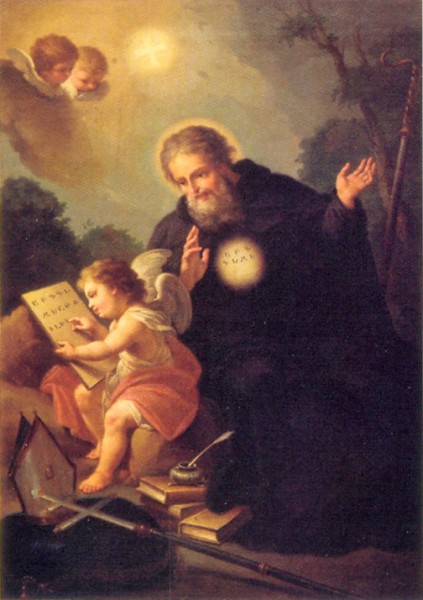
Mesrop Mashtots
SOCIAL CHANGES
For ordinary people, besides the obvious replacement of traditional gods and pagan temples, there were also social changes which directly affected them. One notable area was marriage as the Christian church formalised the institution and made it necessary for the couple to legalise their union through the swearing of vows which adhered to the Christian doctrine. Even the choice of partner was more limited as partners now had to come from outside one's family with the exception that a widow might marry her brother-in-law. Polygamy, which had not been uncommon, was also prohibited. Other traditional rituals which were now forbidden included lamentations for the dead and mourning dances during which mourners often cut their faces and arms. The Church brought benefits as well as restrictions, though, setting up hospitals, hostels, orphanages, and leprosaria for the poor and sick.
MESROP MASHTOTS & THE ARMENIAN ALPHABET
By the early 5th century CE Christianity in Armenia was given a great boost by the invention of the Armenian alphabet by the scholar-clergyman Mesrop Mashtots (360/370 - c. 440 CE). Mashtots, with full state and church backing, created a new scriptwith the primary purpose of allowing the common people to read the Bible and other Christian texts in their own spoken language, which at that time had no written form. The ultimate consequence of this approach to spreading the gospel through language is here summarised by S. Payaslian:
The following years witnessed enormous efforts by learned religious leaders and scholars to translate Greek and Syriac Christian texts into Armenian and to strengthen the new national culture through Armenianization. The church gradually gained control over Armenian culture, literature and education and, with the support of the state, instituted a Christian hegemonic, “totalising discourse”. Armenian culture, identity, and history came to be viewed nearly exclusively through the prism of Christian theology. (40)
This article was made possible with generous support from the National Association for Armenian Studies and Researchand the Knights of Vartan Fund for Armenian Studies.
LICENSE:
Article based on information obtained from these sources:with permission from the Website Ancient History Encyclopedia
Content is available under License Creative Commons: Attribution-NonCommercial-ShareAlike 3.0 Unported. CC-BY-NC-SA License